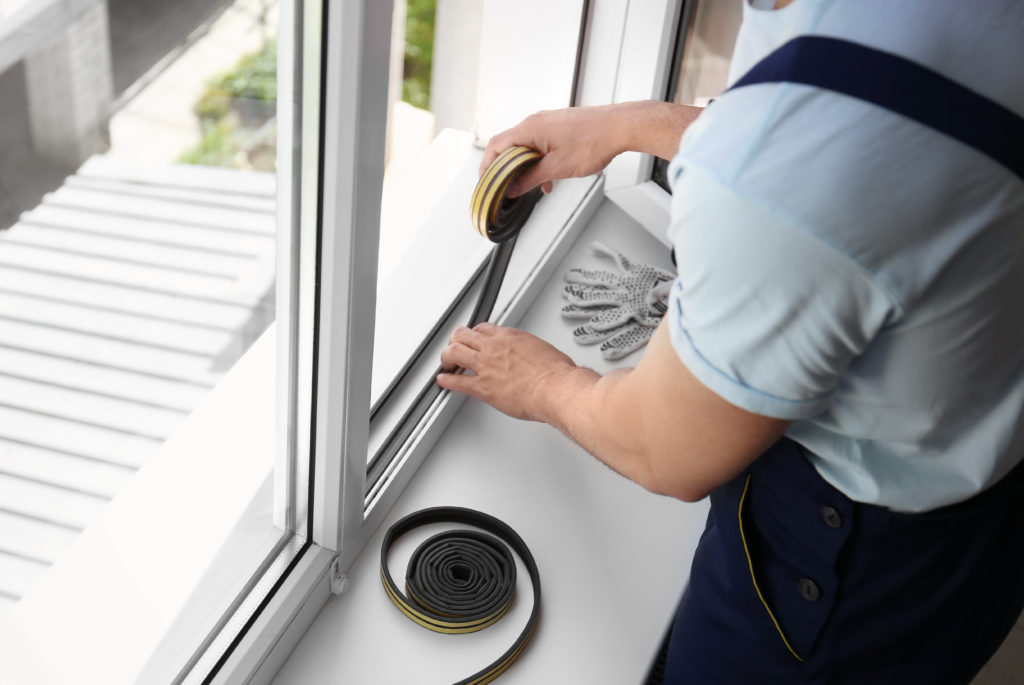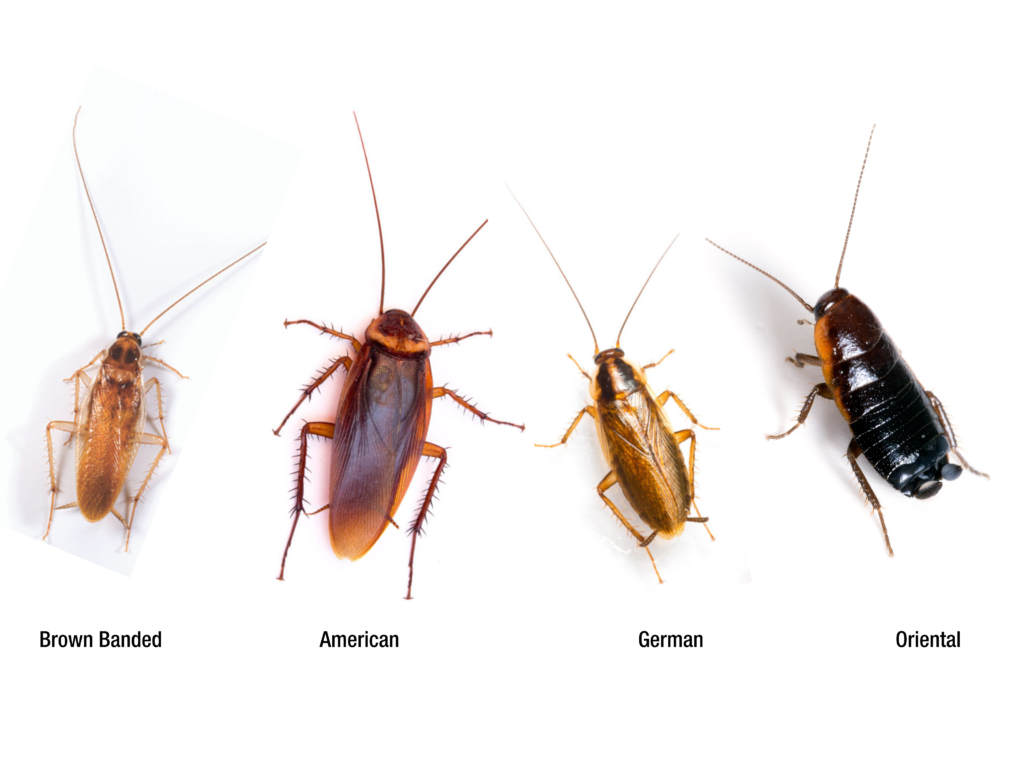There are two main reasons why cockroaches keep returning to your apartment.
- Some stragglers survived your first treatment and were able to repopulate.
- Your neighbor also has a roach outbreak. Even if you’ve managed to eliminate every single cockroach in your apartment, another batch can infest your home.
So how do you permanently get rid of these critters?
Here we’ll give you a step by step guide on how to eliminate roaches in your apartment for good.
Let’s get going.
1. Clean and Sanitize Your Home
Getting rid of roaches permanently in your apartment is a multi-step process.
The first step?
Keep your apartment clean.
Roaches love to be places where food is easily accessible.
- Keep your trash bins clean.
- Wash your dishes right after meals.
- Make sure you seal your food in tight containers.
- Wipe your stove to remove grease and mop regularly.
- Vacuum or sweep your floor, so no food crumbs are lying around.
- Sweep behind and under your fridge, under your stove and couch.
- Clean your cabinets, especially the ones in the kitchen and bathroom. Roaches love dark and damp places, so they are likely to hang out there.
- Clean every corner in your apartment, especially the parts that you do not see or clean regularly.
- Take out your garbage before going to bed.
2. Seal All Entry Points

Seal all entry points to prevent roaches from getting inside your home.
Inspect both the inside and outside of your apartment thoroughly.
Examine your windows and doors for gaps.
Weatherstrip your doors and windows.
It is an inexpensive way to keep critters from entering along the sides or top of your door.
Use a door sweep to block the gap under your apartment door to prevent roaches from crawling in.
Remember to apply the kind that sticks onto the door with an adhesive strip, so you won’t need to drill.
Seal the joint where your door frame meets the wall using a caulk. This will prevent any cockroaches from sliding in through small cracks.
Check for holes and tears on your door and window screens and repair them or have your apartment manager do it.
Make sure your faucets and pipes don’t have any cracks where cockroaches can slip through.
Remember to check your lease agreement before doing any work. Have maintenance seal your apartment if your lease agreement doesn’t allow you to do so.
3. Determine the Type and Severity of Your Infestation
Next, identify the type of cockroach you have and the severity of your infestation.
The best way to do this is with sticky traps.
Sticky traps will catch any roach that walks over it.
You can place these traps where roaches are likely to travel and live.
Some common hiding spots are under appliances and on top of cabinets.
Another ideal place for these traps is in areas near water, such as under your kitchen and bathroom sink.
Check your trap during the day when roaches are less active.
It may take a few days to get a good sample if you’re dealing with smaller infestations. But, if you have a significant infestation, you’ll typically only need one day.
If your trap only has a few cockroaches with about the same size, your infestation is likely small and early.
On the other hand, if your sticky trap has many roaches with different sizes (adults, various sized nymphs, etc.), chances are your infestation has grown.
Use your traps to also have a better look at what cockroach you have.
Here are four common household cockroaches.
- The German cockroach
- The Brown-banded cockroach
- The American cockroach
- The Oriental cockroach
And here’s how they look like:

You must use sticky traps after your treatment to test how effective it was.
I recommend keeping a few traps so you can test your house for the next several months to make sure the infestation does not return.
If you are looking for quality roach glue traps, I highly recommend catch master. They are effective, sold in bulk, and inexpensive.
4. Apply Gel Bait Where Roaches Travel and Live
Studies have shown that gel bait is one of the most effective ways to eliminate cockroach infestations.
This control method is highly effective because it implements tertiary kills.
Here’s what I mean.
When cockroaches ingests gel bait, they don’t die right away.
Instead, they return to their home where they defecate.
But gel baits turn cockroach feces into poison.
And because juvenile roaches (nymphs) rely on adult feces to survive, the contaminated feces will kill them.
But the killing doesn’t end there.
Once the nymphs die, they pass on the poison to the other cockroaches that eat their bodies.
Bait gels are effective at capturing primary, secondary, and tertiary kills.
So how do you apply bait gels?
Gel Bait can take one of two forms.
Bait stations are small stations were roaches can go and consume the gel bait.
While Bait stations are easy to move around, they tend to be limiting.
They don’t fit in small areas where roaches travel, such as tiny holes and crevices.
To get around this, use gel baits in the form of tubes or syringes.
Syringes make it easy to apply bait to tiny areas around your apartment.
Great places for application include cervices and tiny holes on your floor and walls. You’ll also want to apply inside cabinets to place a drop at each corner or inside the hinges.
Syringes are also great if you want to place gel bait on under your appliances.
For this, I recommend placing the gel on a 2×2 inch wax paper to keep track of where you place it.
Apply a pea-sized drop about every two feet. Doing so will allow roaches to access the bait quickly.
Gel bait remains effective for two weeks, so reapply accordingly.
If you are looking for product recommendations please see below. There is only one type of roach gel bait I recommend and that is Advion.
Advion is a professional grade cockroach bait used by professionals.
If you do prefer bait stations you have two options.
The first is the common commercial bait station. They are easy to find but they are not always effective due to the active ingredient commonly used.
On the other hand, you can go with a professional-grade bait station which is guaranteed to work but it is much more expensive.
5. Use Dust Bait in Small Crevices
Dust bait is similar to gel bait, except it comes in the form of powder.
When roaches walk over the dust, it will get all over their bodies.
Since roaches groom themselves frequently, they will eat the dust and die.
Dust bait comes with a small hand pump or tube, making them perfect for getting deep into small crevices and wall voids.
Apply 2-3 pumps of dust into crevices where you could not apply gel bait.
It’s also great to apply to large areas where people won’t usually go, like your attic or basement.
When using dust bait, only apply a very light layer.
Cockroaches avoid thick layers of dust because it is hard to walk through.
Using dust bait in small crevices and in hard to reach areas will allow you to apply bait to areas where you wouldn’t otherwise be able to.
The best part is that all they have to do is walk over the dust, as time passes they will consume the dust and die.
6. Insect Growth Regulators (IGR’s)
Cockroaches at different stages don’t eat the same food.
Often pregnant females and nymphs do not forage for food but depend on the feces from other adult roaches.
To cover all your bases, use gel baits along with insect growth regulators or IGRs.
IGRs stop infestations by making adult roaches sterile.
It also blocks the roaches’ ability to turn into an adult.
If immature roaches are unable to molt into reproductive adults, the population will eventually die out.
For easy in-home use, use IGR packets rather than sprays.
Break the pack to activate the hormone and place them in your kitchen.
I recommend placing them in your cabinets or drawers to keep track of them quickly.
1 IGR packet is typically enough to treat 50-75 square feet. So you won’t need more than a few packets for your apartment.
IGR packs last about three months, so remember to replenish accordingly.
Keep these packets active for 6-8 months after treatment; this will prevent stragglers from rebuilding the entire infestation.
7. Apply an External Barrier Using Insecticide
The last step is to apply for external protection.
Use an outdoor insecticide and apply it around your apartment.
It’s good to apply it 3 feet from the ground up on the walls of your house.
Then apply it 3 feet wide on the surface of the floor outside your home.
You will need to apply this every 4-6 months, depending on the type of insecticide. Insecticides with higher concentrations will last longer.
This step is essential, so don’t skimp on it.
It’s much better to prevent cockroaches from getting into your house than deal with them once they are inside your home.
Don’t stumble near the finish line.
You don’t want to go through all these steps only to have the roaches come back.
Why Should You Handle Your Own Pest control?
If you live in apartments, you are probably very aware of the difficulties with eliminating cockroaches.
Apartment managers will typically schedule monthly or even yearly pesticide applications.
But, they typically do this as cheaply as they can.
As a result, these treatments are typically only surface-level and do not yield lasting results.
While these treatments kill many roaches, they’re often ineffective at eliminating every single one of them.
And if some survive, it’s guaranteed they will repopulate.
Apartment managers are aware of this.
Yet they will still do the treatments to appease tenants. That is until the roaches come back again.
The biggest issue with this approach is that when the roaches do come back, they will develop resistance to the pesticides used.
Which means it will be harder to kill them in the future.
The more pesticide applications the roaches survive, the stronger their resistance becomes to all kinds of pesticides.
In the end, the cycle of unsuccessful treatments becomes the primary reason that roaches in apartments are almost impossible to exterminate.
If you want to eliminate roaches in your apartment, it’s often best to deal with the infestation yourself.
Conclusion
Removing roaches from your apartment permanently will take some time.
But with patience and perseverance even the sneakiest roach will not survive you.
All you have to do is follow the steps above thoroughly and soon your apartment will be roach free.
You’ll finally be able to get your home back.
